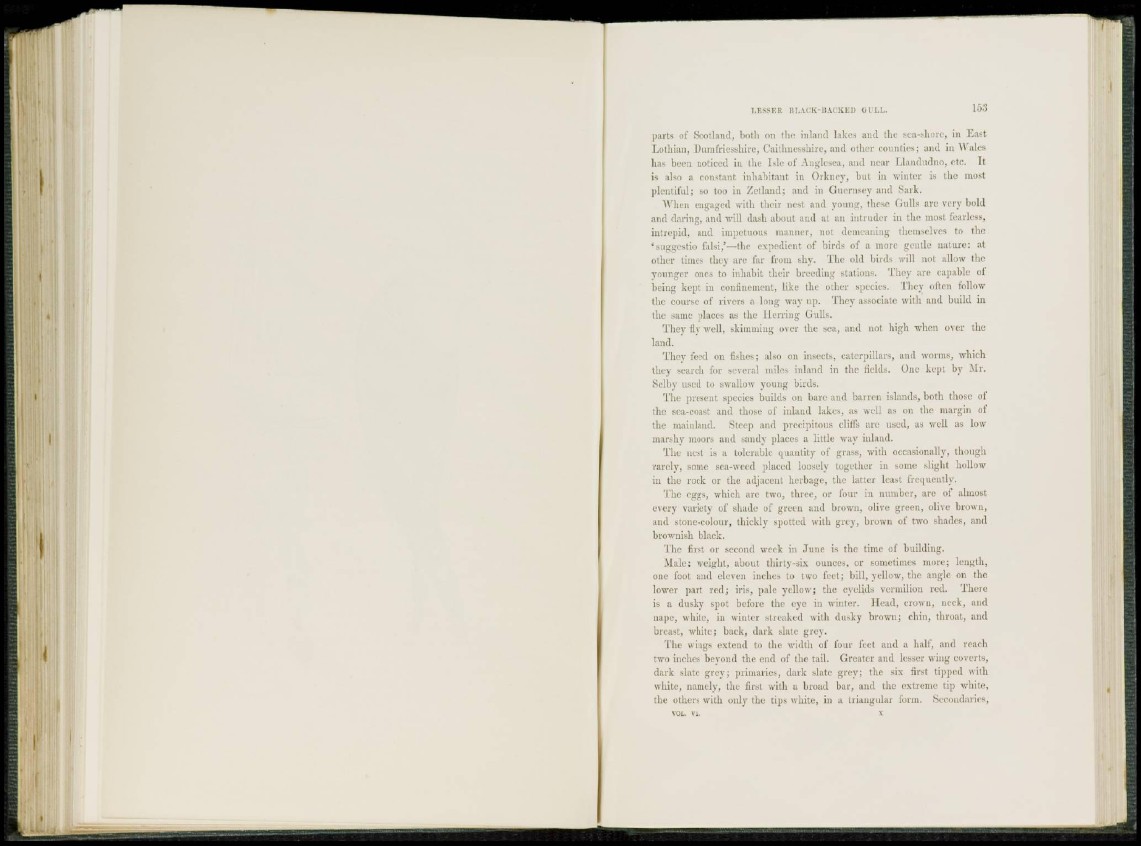
parts of Scotland, both on the inland lakes and (he sea-shore, in East
Lothian, Dumfriesshire, Caithnesshirc, and other counties; and iu Wales
has been noticed in tin; Isle of Anglcsca, and near Llandudno, etc. It
is also a constant inhabitant in Orkney, but in winter is the most
plentiful; so too in Zetland; and in Guernsey and Sark.
When engaged with their nest and young, these Gulls arc very bold
and daring, and will dash about and at an intruder in the most fearless,
intrepid, and impetuous manner, not demeaning themselves to the
'suggestio falsi,'—the expedient of birds of a more geutle nature: at
other t i n i e r |he\ are far from shy. The old birds will not allow 1 lie
younger ones to inhabit their breeding stations. They are capable of
being kept in confinement, like the other species. They often follow
the course of rivers a long way up. They associate with and build in
the same places as the Herring Gulls.
They fiv well, skimming over the sea, and not high when over the
land.
They feed on fishes; also on insects, caterpillars, and worms, which
they search for several miles inland in the fields. One kept by Mr.
Selby used to swallow young birds.
The present species builds on bare and barren islands, both those of
the sea-coast and those of inland lakes, as well as on the margin of
the mainland. Steep and precipitous clilfs are used, as well as low
marshy moors and sandy places a little way inland.
The nest is a tolerable quantity of grass, with occasionally, though
rarely, some sea-weed placed loosely together in some slight hollow
in the rock or the adjacent herbage, the latter least frequently.
The eggs, which arc two, three, or four in number, arc of almost
every variety of shade of green and brown, olive green, olive brown,
and stone-colour, thickly spotted with grey, brown of two shades, and
brownish black.
The first or second week in June is the time of building.
Male; weight, about thirty-six ounces, or sometimes more; length,
one foot: and eleven inches to two feet; bill, yellow, tin- angle on the
lower part red; iris, pale yellow; the eyelids vermilion red. There
is a dusky spot before the eye in winter. Head, crown, neck, and
nape, white, in winter streaked with dusky brown; chin, throat, and
breast, white; back, dark slate grey.
The wings extend to the width of four feet and a half, and reach
two inches beyond the end of the tail. Greater and lesser wing coverts,
dark slate grey; primaries, dark slate grey; the six first tipped with
white, namely, the first with a broad bar, and the extreme tip white,
the others with only the tips white, in a triangular form. Secondaries,
\OL. VI. x